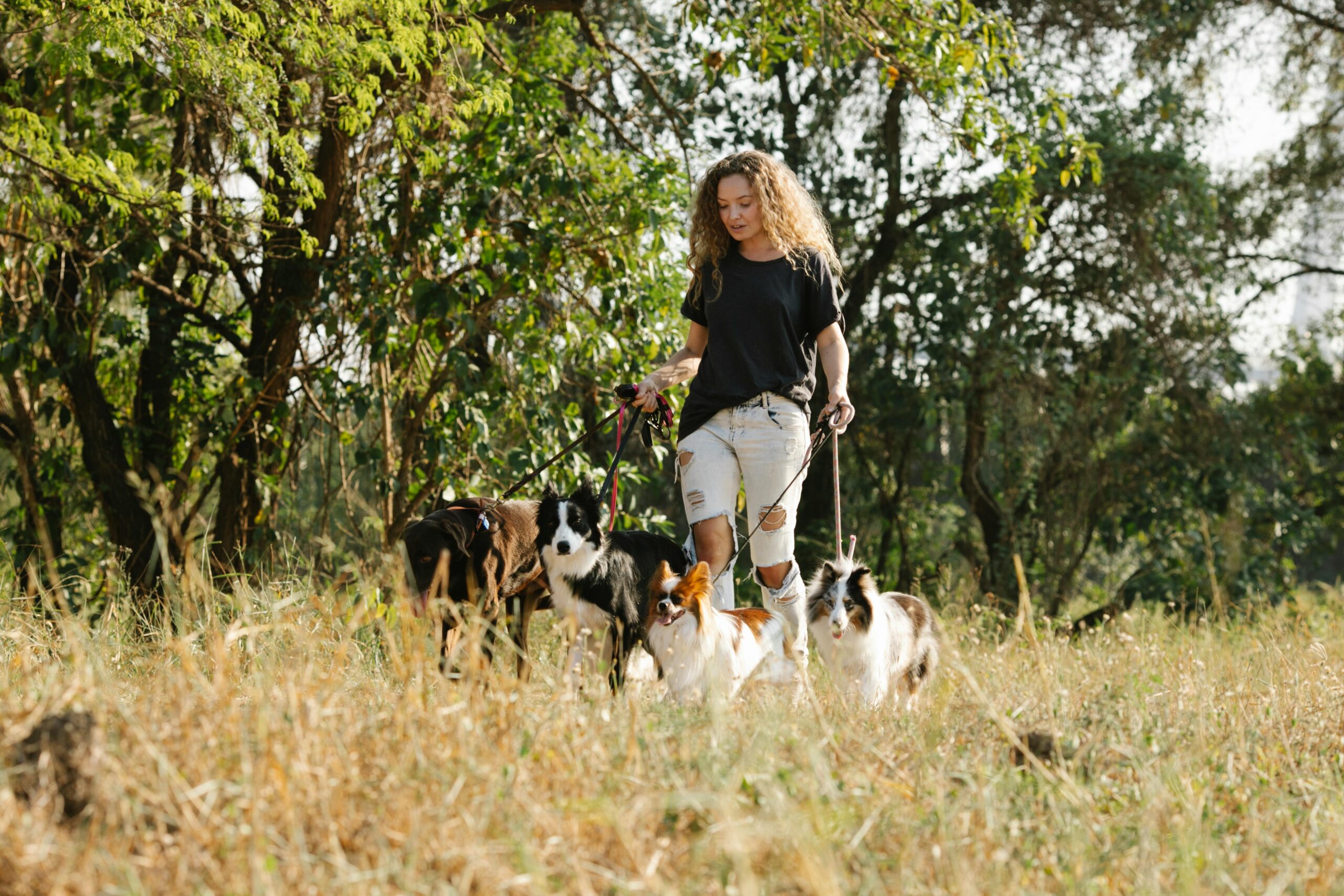Life with more than one dog can be rewarding, but it also comes with challenges. From competition over food to noisy excitement at the door, multi-dog households require structure to prevent chaos. In Cleveland, where families often have active lifestyles, well-trained dogs are the key to keeping balance.
As a trainer, I’ve seen both ends of the spectrum: homes where multiple dogs coexist calmly, and homes where stress builds because rules aren’t clear. The difference always comes down to consistent training, leadership, and structure.
Why Multi-Dog Training Matters
Without clear boundaries, dogs can develop unhealthy habits such as:
- Guarding food or toys
- Competing for attention
- Barking or rushing the door as a group
- Feeding off each other’s anxiety
When you establish structure early, these behaviors don’t spiral into long-term issues.
Train Dogs Individually First
Before expecting group obedience, make sure each dog knows the basics on their own. Commands like sit, down, come, and place should be solid individually.
Our post on how inconsistent training confuses your dog explains why clarity is so important. In a multi-dog household, mixed signals can lead to confusion times two.
Use Group Commands
Once individual skills are reliable, begin group sessions:
- Line dogs up for a group sit before walks
- Practice place training with each dog on their own mat
- Teach a release word so they break commands calmly and not in a rush
Start small, then extend the duration and distractions as they improve.
Avoid Favoritism
Dogs notice when one consistently gets attention or rewards. Rotate who gets praised first, and reward each for calm behavior. Fairness reduces competition and fosters cooperation.
Manage Resources
Feed dogs separately or in crates to prevent food guarding. Rotate toys, and supervise play until you’re confident they can share respectfully. Clear rules around resources are one of the fastest ways to reduce tension.
Real-World Drills
- Door Control: Have dogs sit and wait while you open the door, releasing them one at a time.
- Calm Walks: Practice walking two dogs together, but keep enough space between them at first.
- Guest Manners: Place dogs on separate mats when visitors arrive, releasing them once they’re calm.
FAQ: Multi-Dog Training
Q: Should I train all my dogs at once?
Not at first. Start with one-on-one sessions, then gradually combine them.
Q: What if my dogs compete for attention during training?
Rotate focus. Reward one dog for waiting patiently while the other works.
Q: Can older dogs learn alongside younger ones?
Yes. Older dogs can model calm behavior, but they also need individual attention to avoid frustration.
Q: How do I stop fights over toys or food?
Manage the environment. Separate feeding areas, rotate toys, and reward calm sharing behaviors.
Q: Is professional training worth it for multi-dog homes?
Absolutely. Trainers can help balance pack dynamics and build consistency across all dogs.
Cleveland Success Story
A family I worked with in Lakewood had three excitable terriers who barked non-stop whenever the doorbell rang. By practicing group place training and structured door drills, the dogs learned to stay calm even during high-energy moments. Within weeks, the chaos was gone, and the household was far more peaceful.
Our Basic & Advanced Obedience Program is especially effective for multi-dog households because it teaches clear rules that all dogs can follow.
Expert Insight
The AKC’s guide to training in a multi-dog household emphasizes structure, fairness, and consistent rules. These principles align closely with what we practice in professional obedience training.
Final Thoughts
Multi-dog homes don’t have to be chaotic. With individual training, clear group rules, and consistent leadership, your dogs can live together peacefully.
If you’d like help creating a structured plan for your dogs, our Cleveland trainers can provide personalized support. You can get started by reaching out through our contact page.


